Seychelles
Paradise is not a heavenly place. It is to be found on this earth, at the edge of the Indian Ocean. Spread over about 115 islands, created from coral and granite: the Seychelles.
The capital, Victoria, on the main island of Mahé, is considered one of the smallest capitals in the world. Most of the time it is quiet here. In the harbor, sailing yachts and colorful fishing boats are anchored in turquoise water. The palm leaves rustle in the noontime wind, while the snack bars are just opening for the first customers of the day.
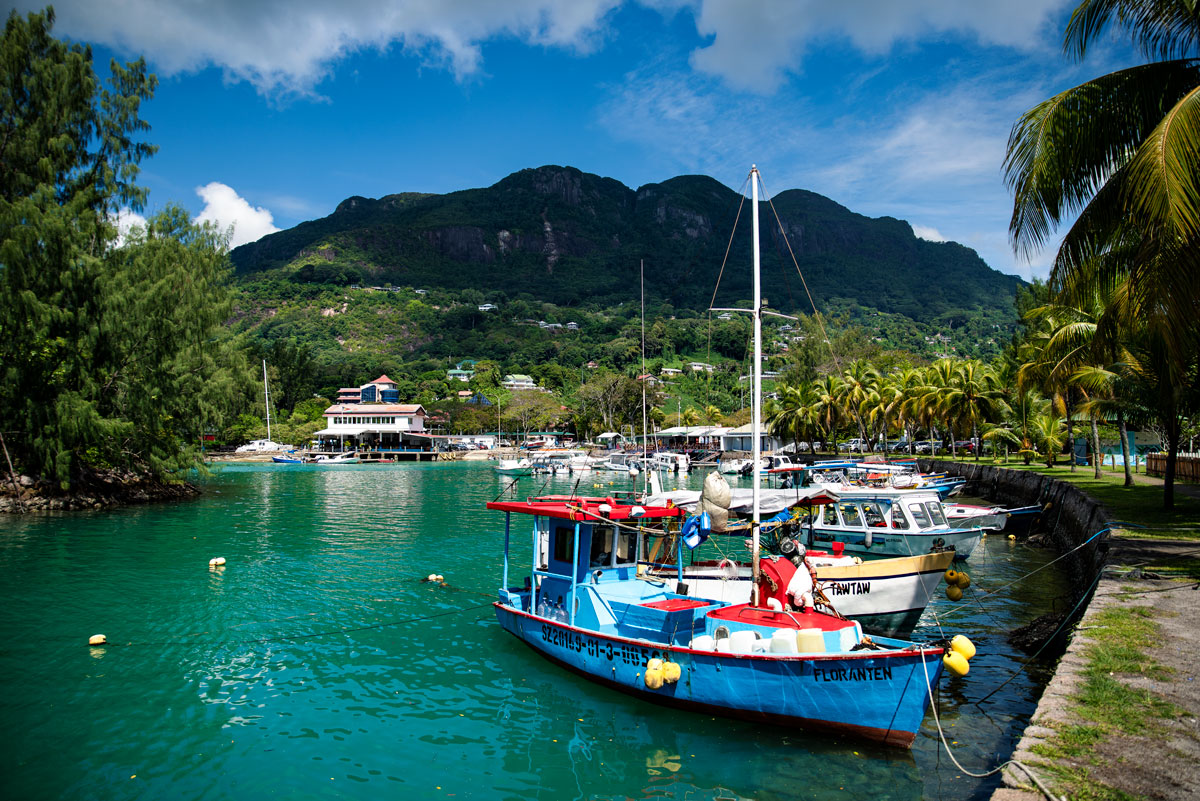
A clock commemorating the English Queen Victoria. A church reminiscent of the French colonial style. A Hindu temple to Ganesha. The modern world history of globalization summarized in one city. African slaves, European colonialists and Asian immigrants have mixed over the centuries. People of all skin colors now live together here.
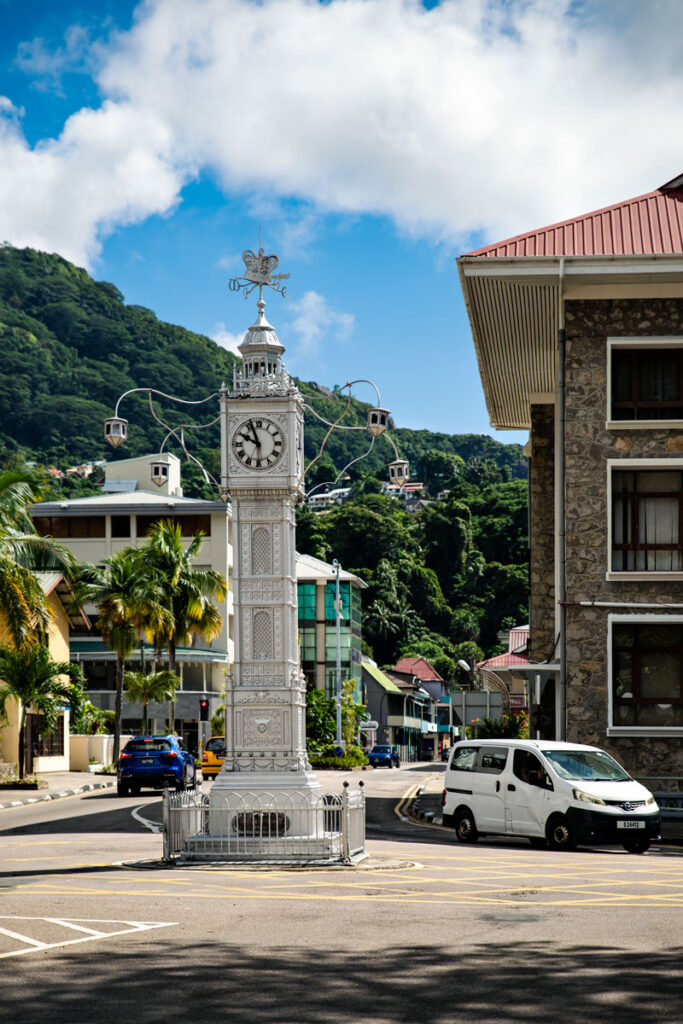
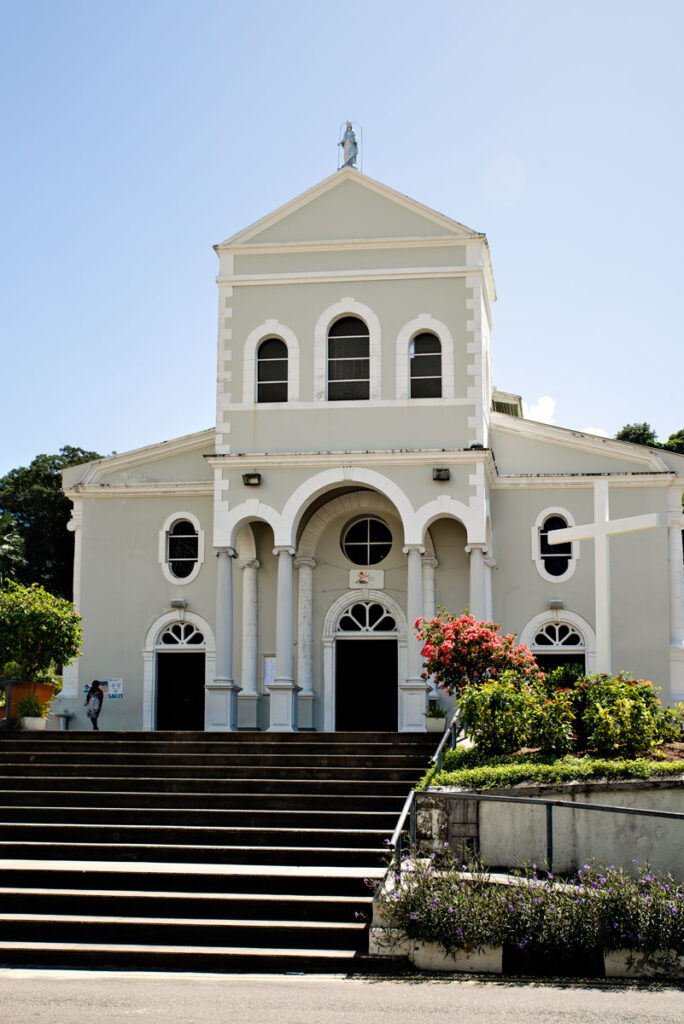
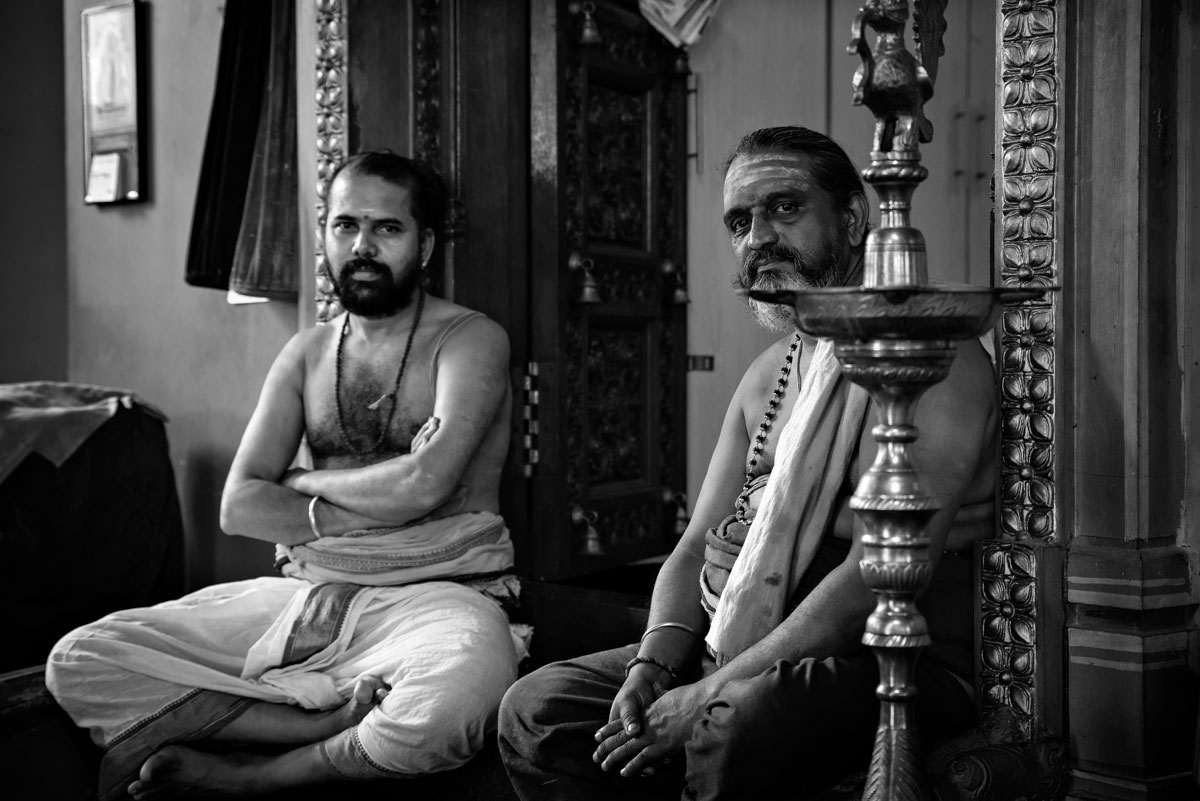
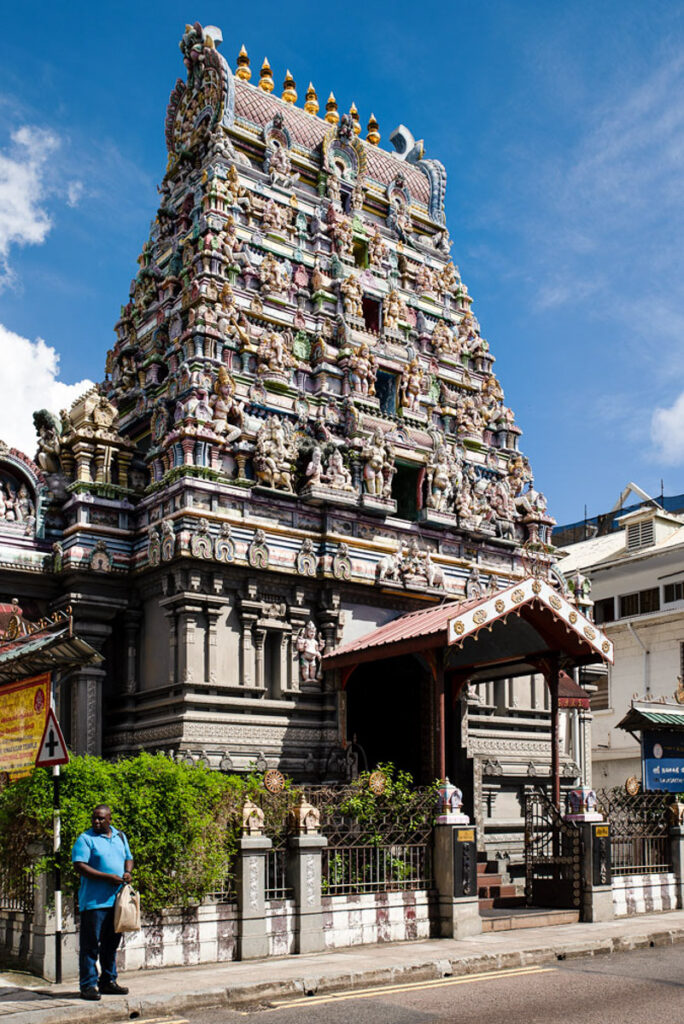
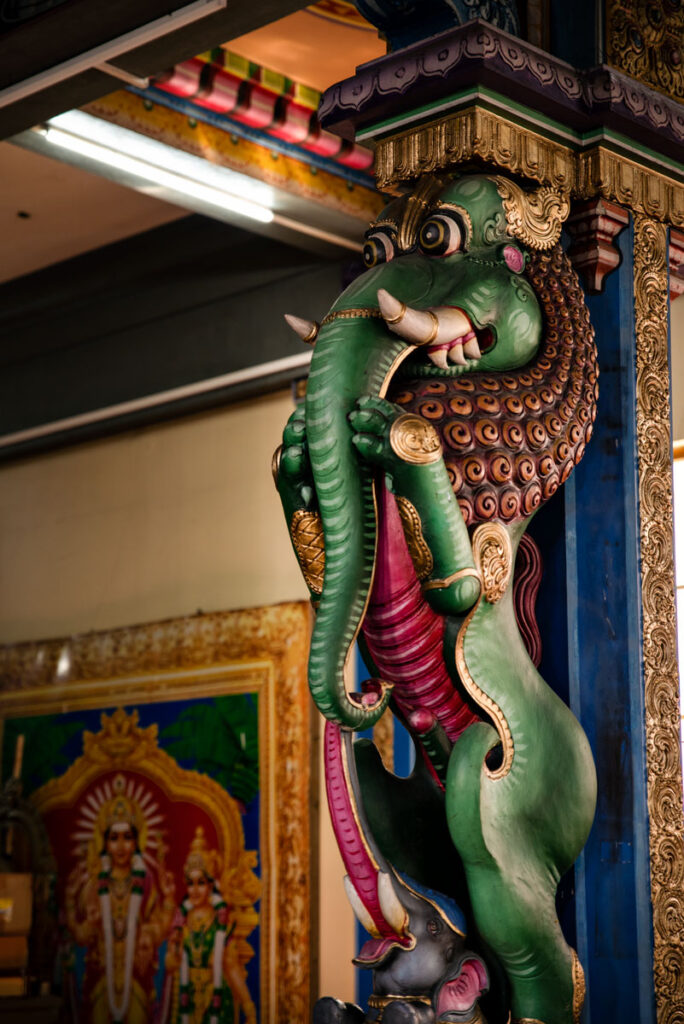
White herons strut around the fish stands. Saleswomen sit among spices and mangoes, chatting with their customers across the rows of stalls. The Sir Selwyn Selwyn-Clarke Market is the most important shopping market for meat, fish, fruit and vegetables on the island.
Despite a relatively good standard of living, even compared to Europe, the inhabitants of the Seychelles struggle with high food prices. Everything that is not grown here has to be brought to the islands by expensive airplanes or ships. Visiting a restaurant is hardly affordable for the Seychellois – we also did without this “luxury”. Those who have the opportunity, fish themselves and grow their own vegetables and fruit in the garden.
The real treasure of the islands can be found away from civilization. It is nature, the jungle with all its unique creatures and overflowing vegetation.
We are grateful to be here: to experience this verdancy, this spicy air, this rustling of waves and palm leaves. But our journey has emitted vast amounts of CO2, we produce garbage and consume water and energy. The irresolvable paradox of the tourist becomes particularly clear here: The tourist comes to see. In the meantime, he destroys what he wants to see. Or according to Hans Magnus Enzensberger: “The tourist destroys what he seeks by finding it.”
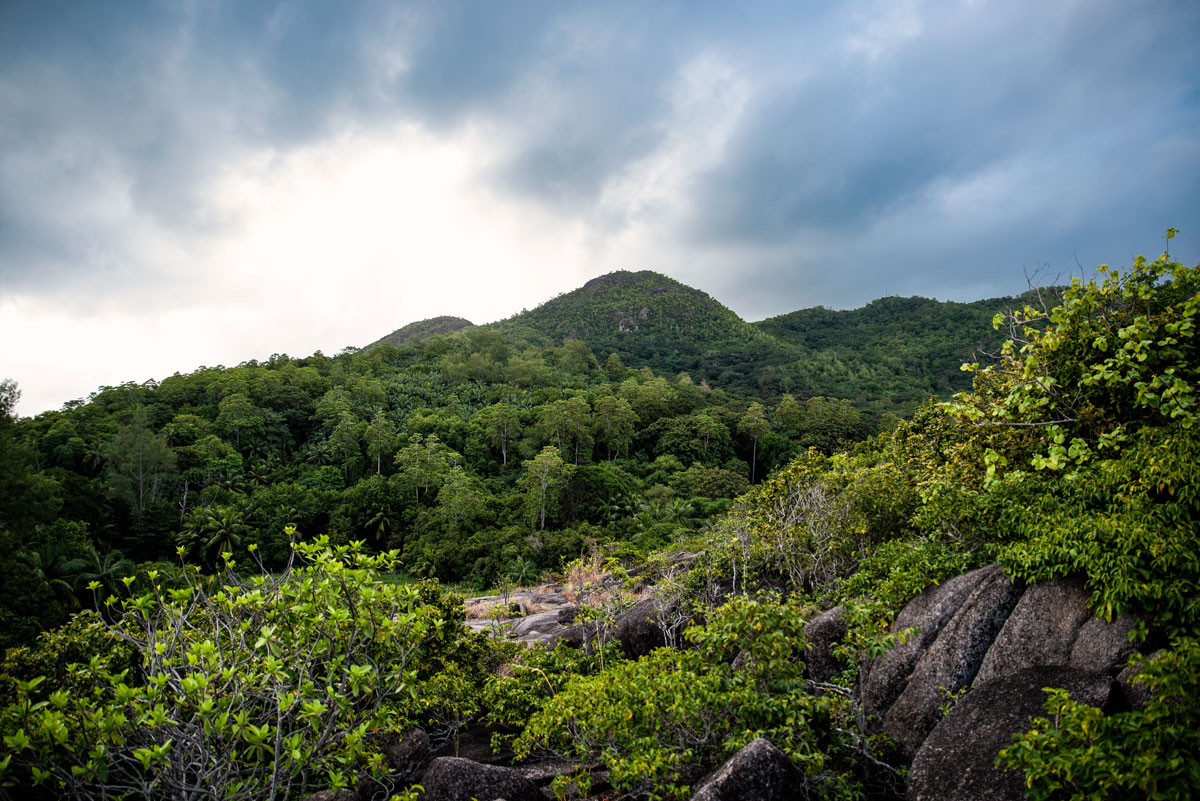
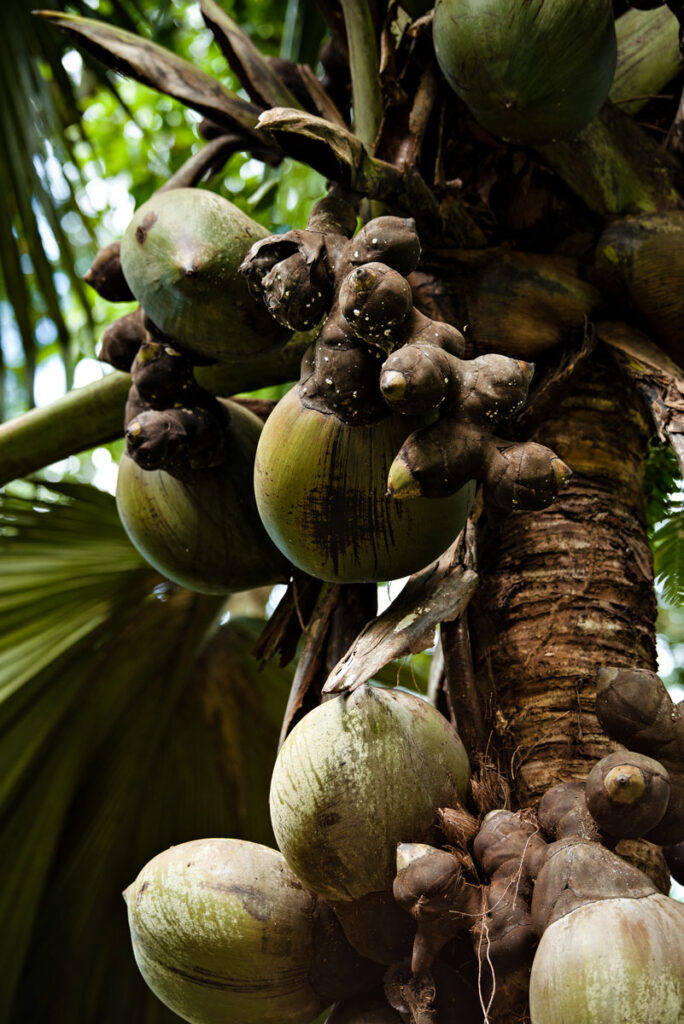
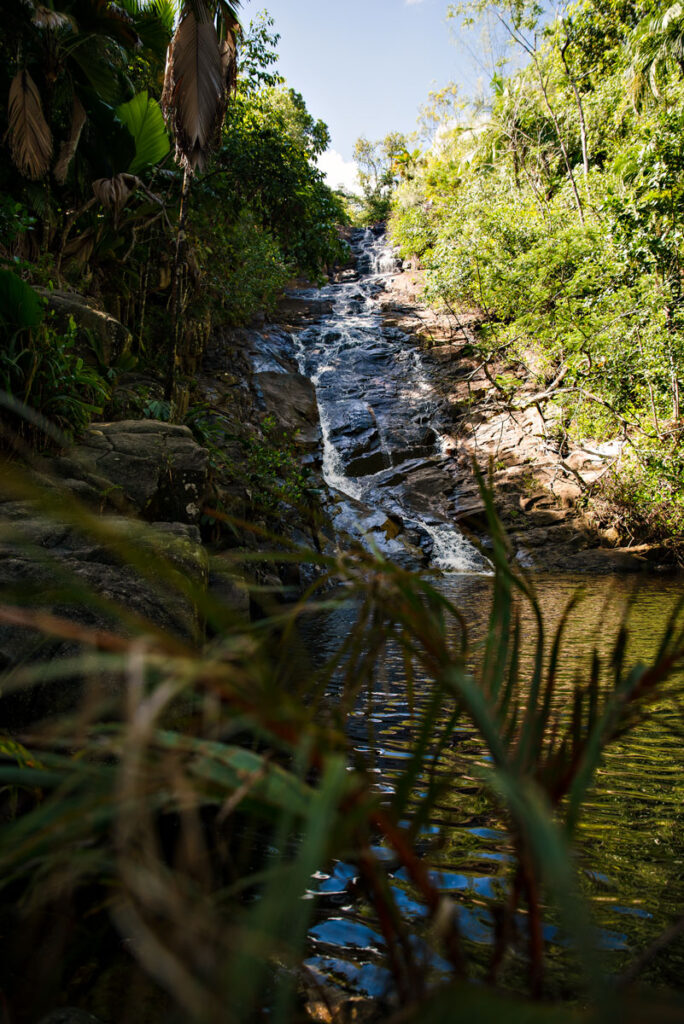
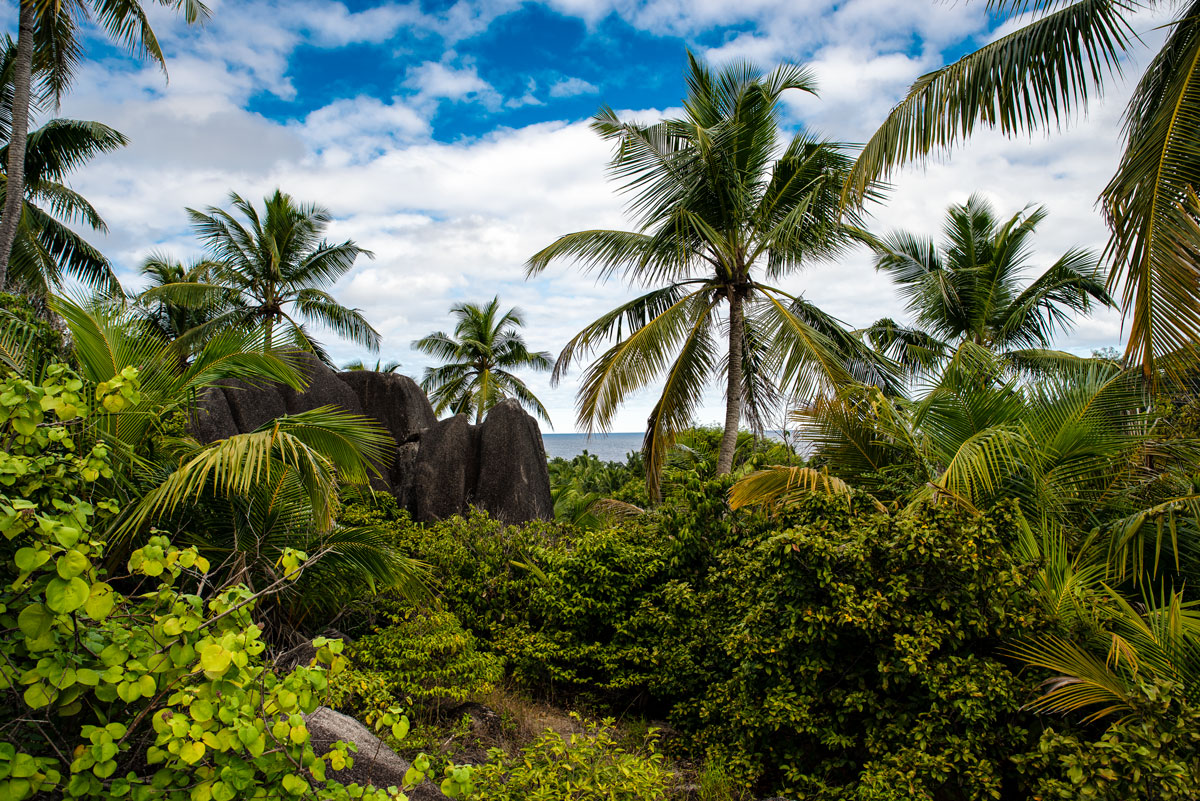
Lush opulence, bubbling life everywhere. Warm rain makes the jungle sprawl. Vanilla, nutmeg and pepper grow by the wayside. Mangoes, coconuts, papayas and bananas. Silk spiders have stretched their golden webs between the trees. At dusk, flying foxes circle the summit of Morne Seychellois.
Endemic wonders: orange songbirds, giant tortoises and the unique Coco de Mer. An island too beautiful to walk on. Too beautiful never to be admired.
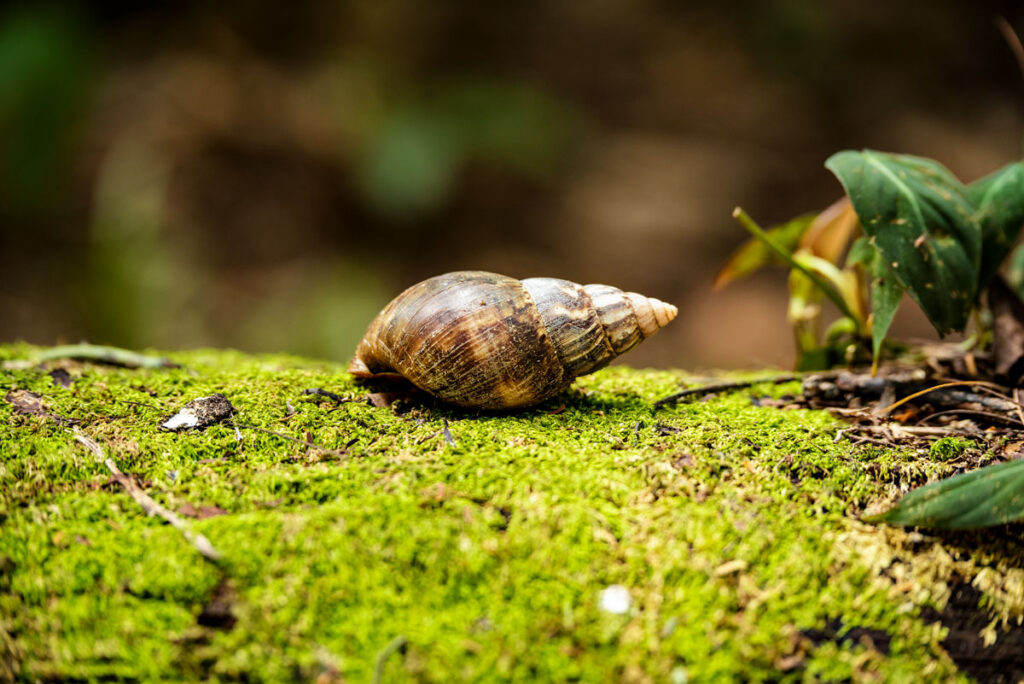
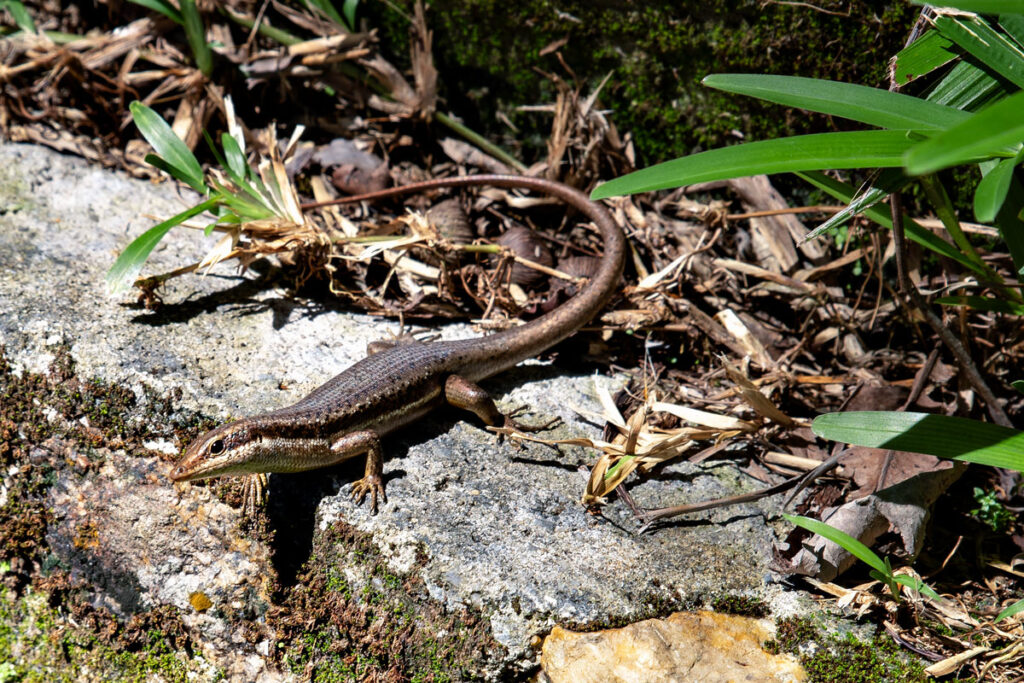
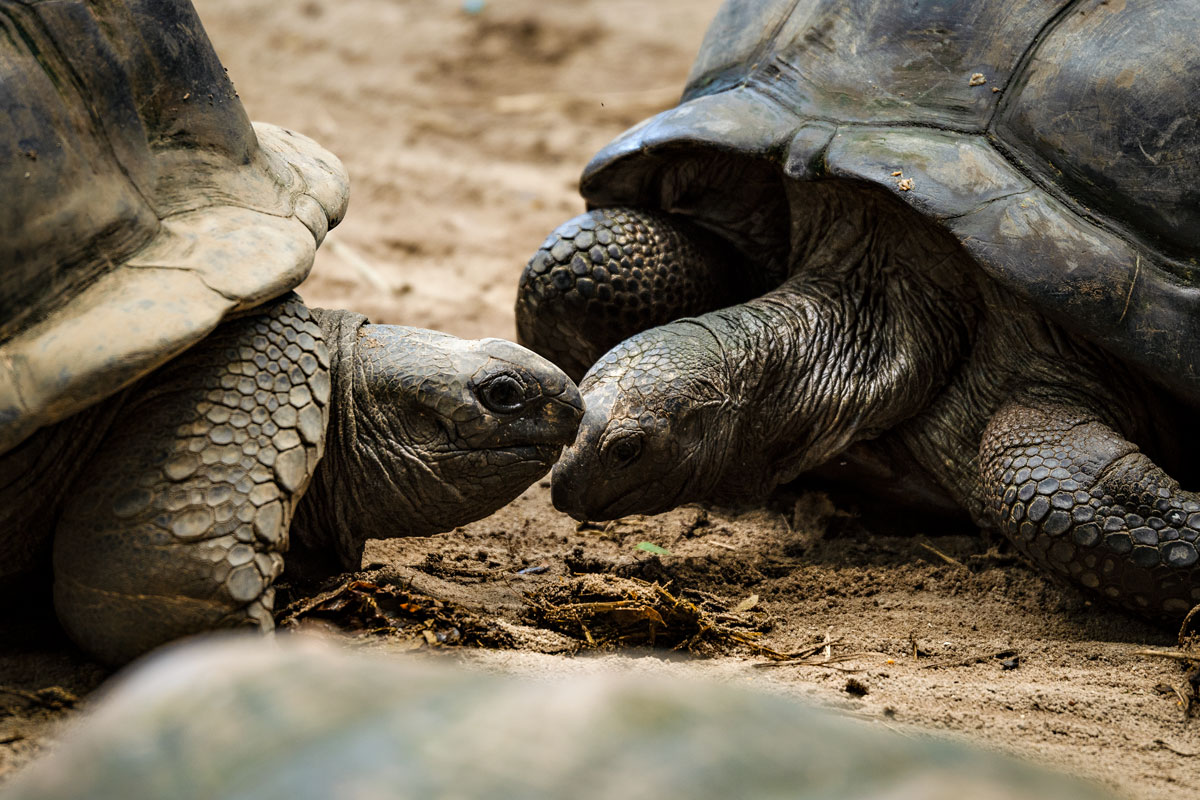
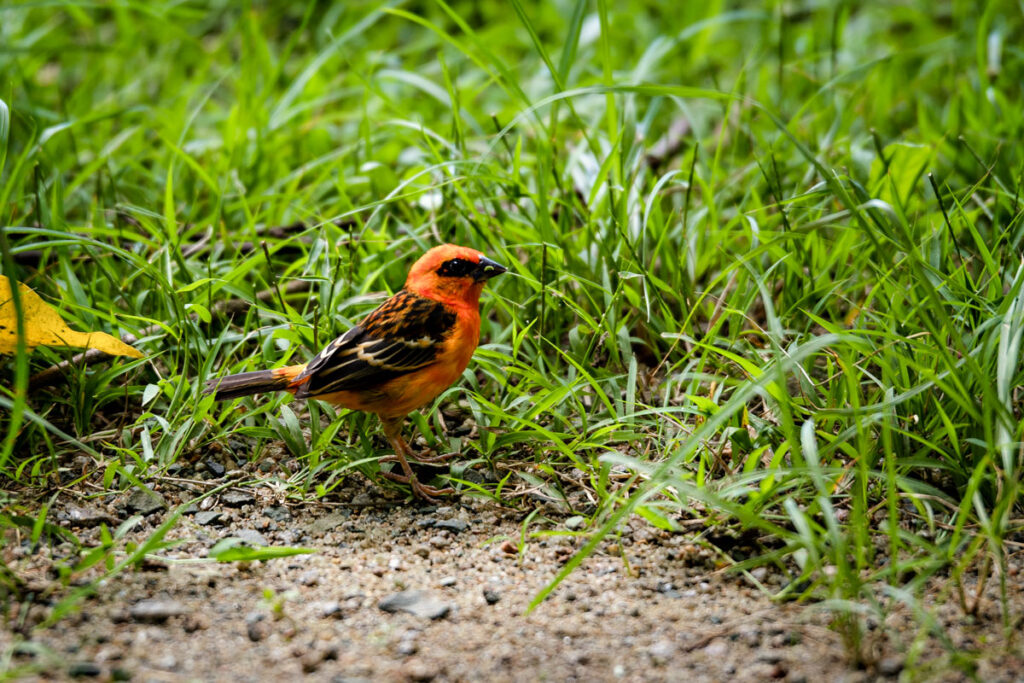
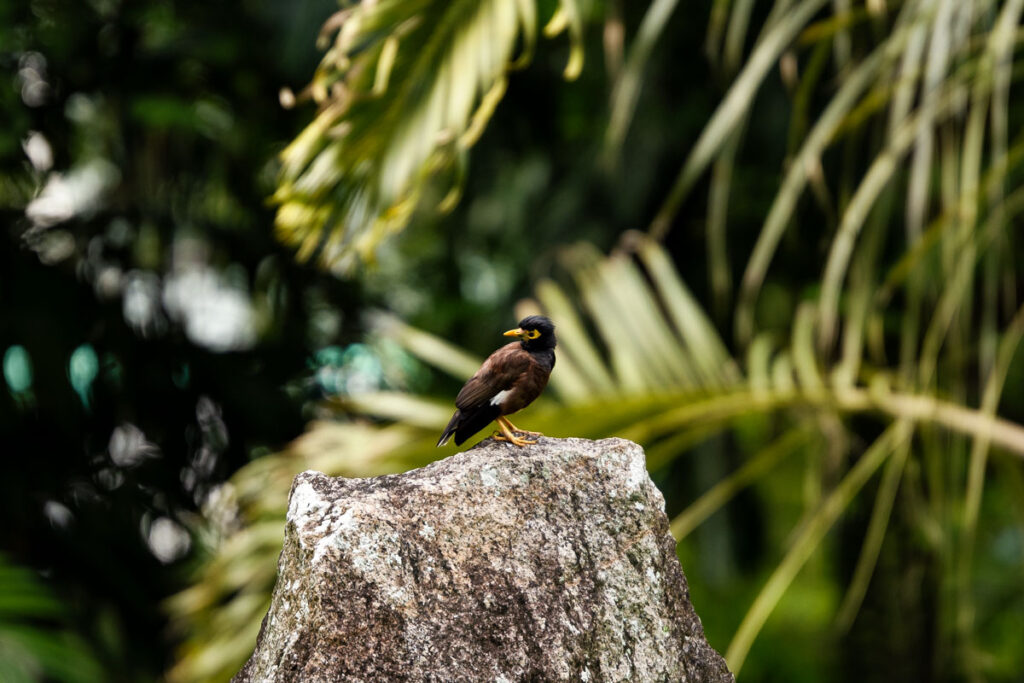
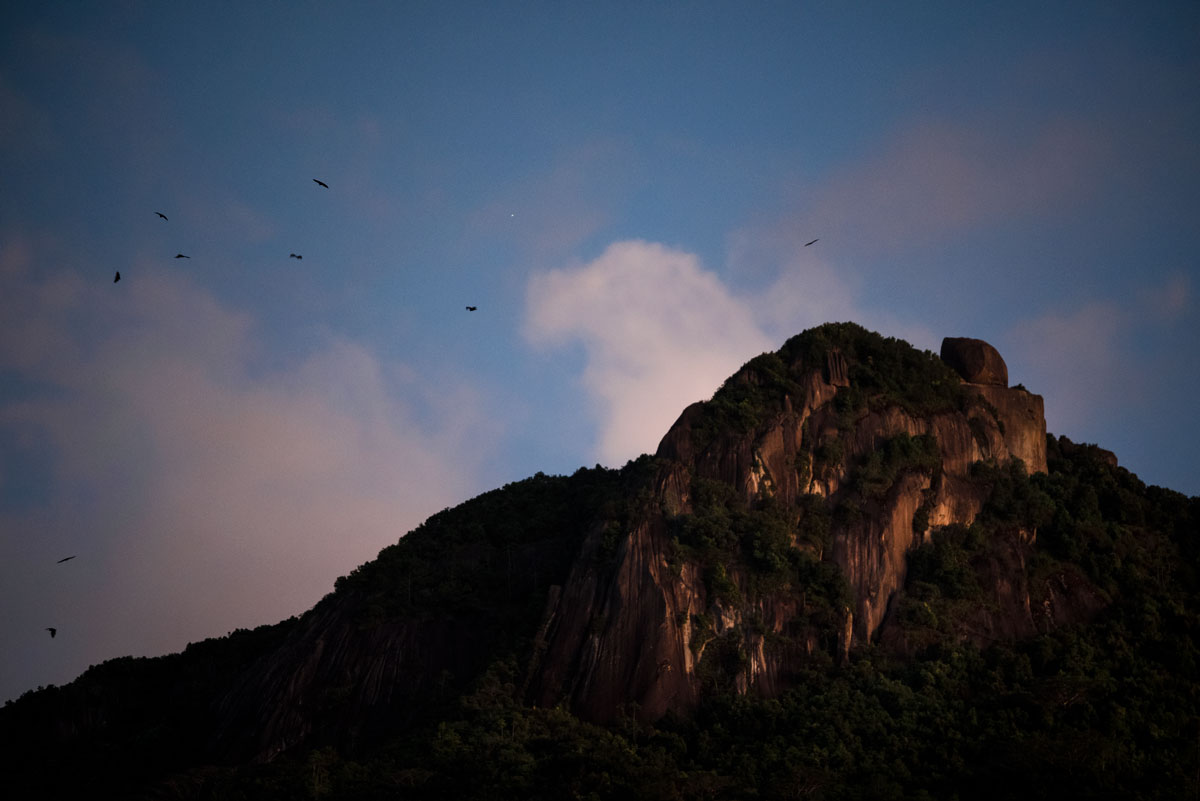
At no point is the jungle so dense that you can’t hear or see the sea. Where immaculate golden sand meets the turquoise ocean, paradise must lie.
Between lonely idyll and peaceful emptiness lie luxury resorts with bungalows hidden under palm trees. In the evening there is barbecue on the beach of Beau Vallon: octopus and barracuda. Roasted breadfruit and curry. In the background the basses of overdriven music system of the cars of the locals hammer.
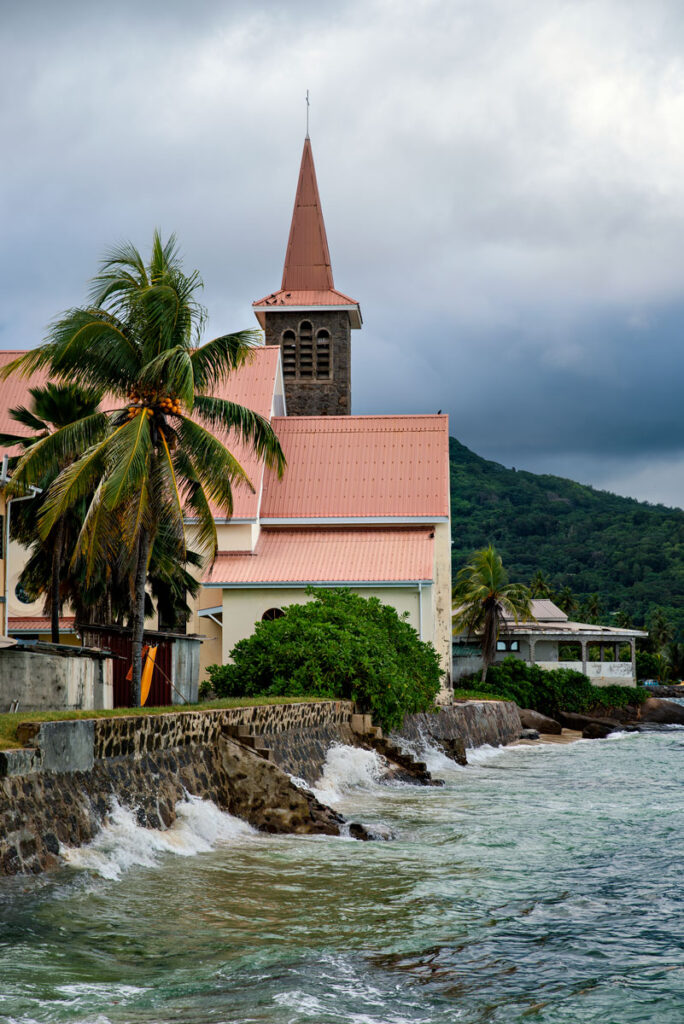
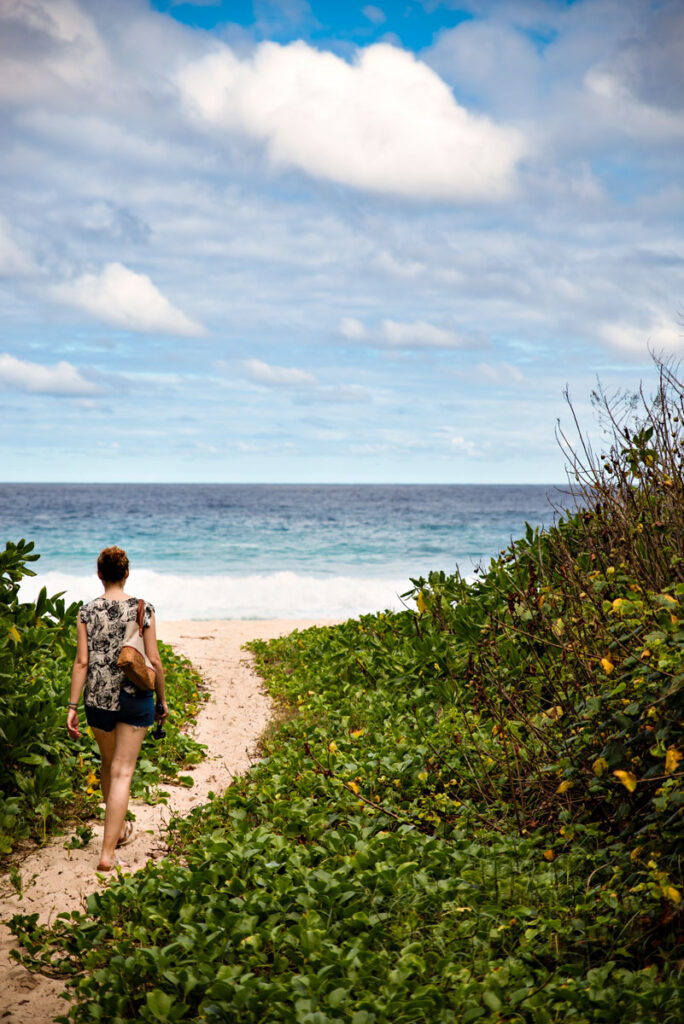
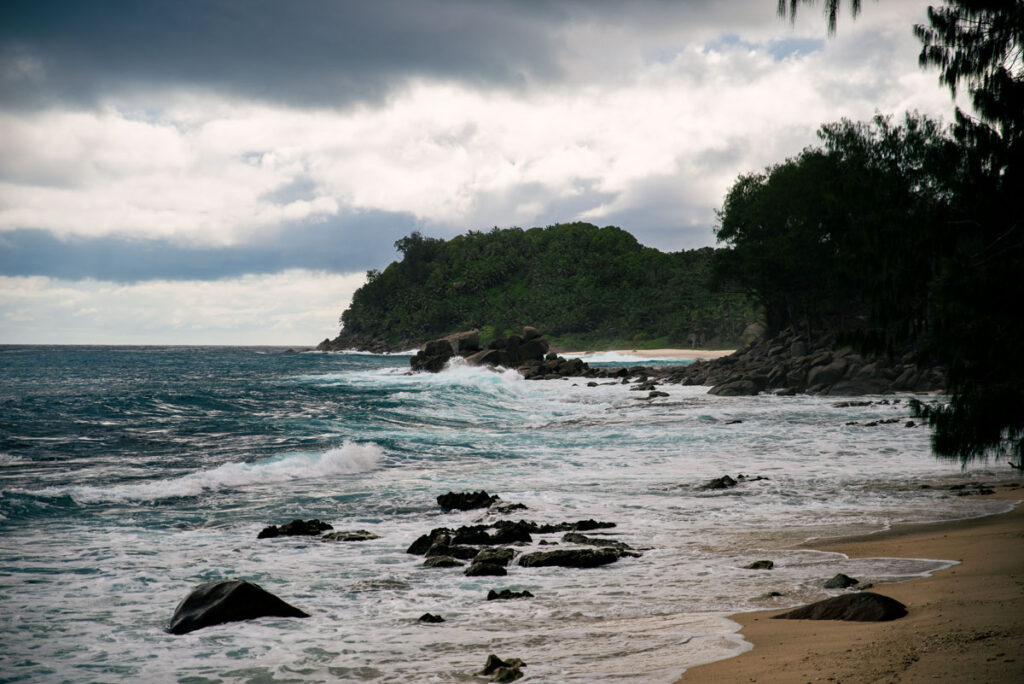
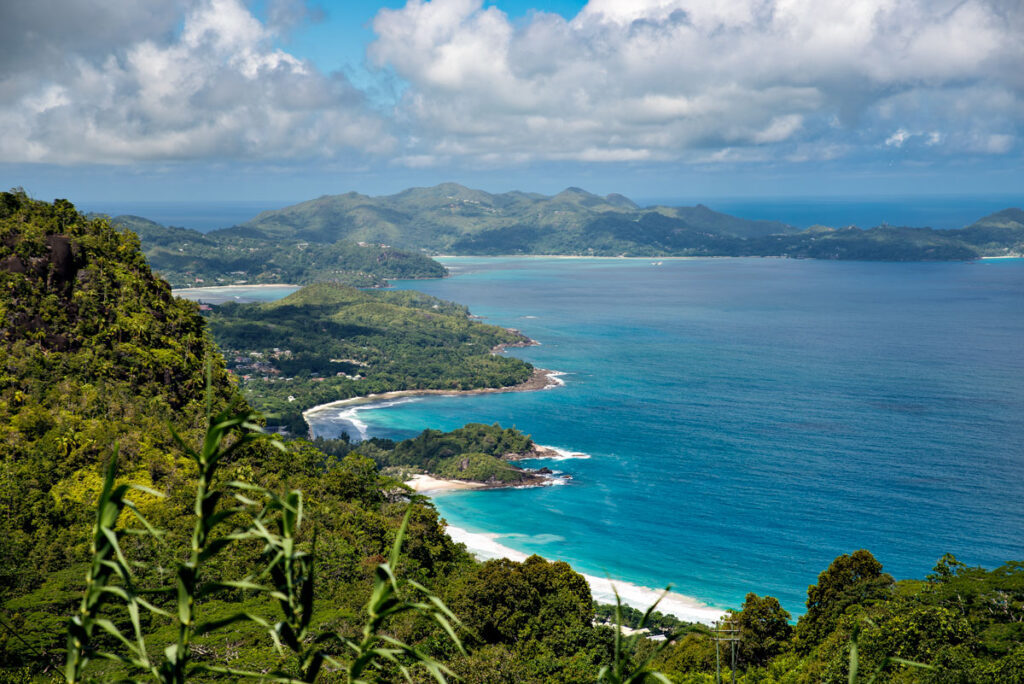
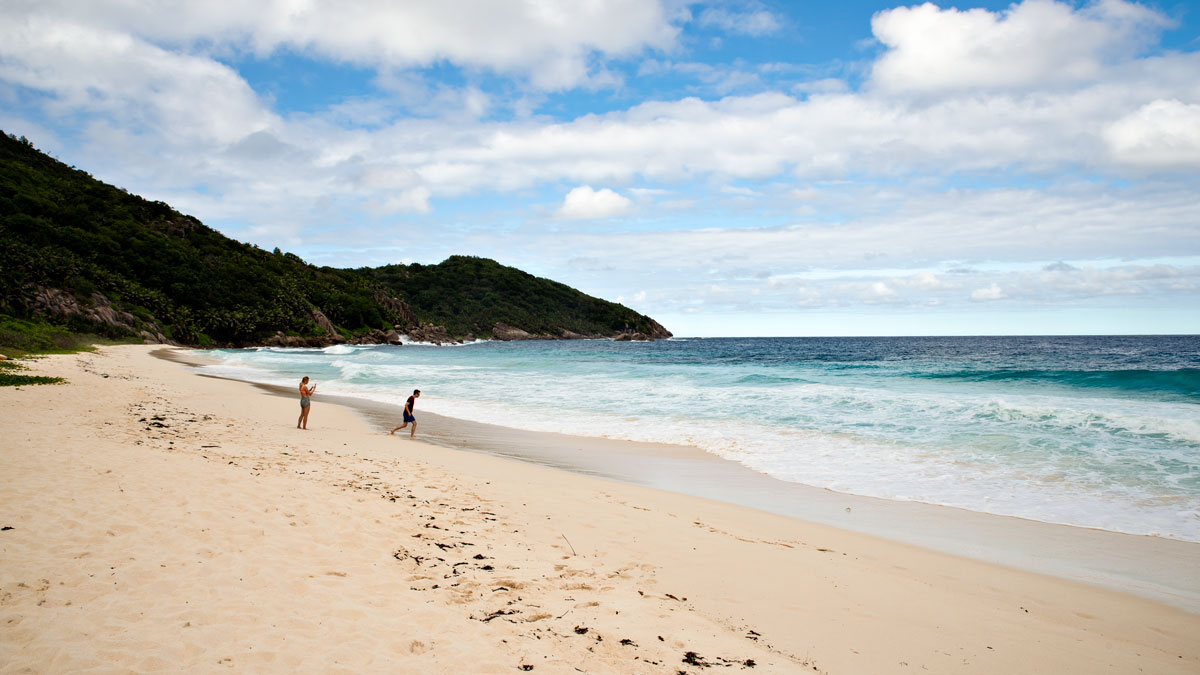
When the prehistoric continent of Gondwana broke up and Africa and India drifted apart, the Seychelles emerged as massive granite formations. Splinters, land remnants of the two giant continents.
The rock formations along the coast and inland bear witness to this origin. No god, but pure force of nature created this paradise.
A thunderstorm in the afternoon clears the sky, rinses dust and sweat from the bodies. The sunsets make wistful. Each day brings a different evening sky. Mountains of clouds and small fleecy clouds, dipped in the colors of the Seychelles flag.
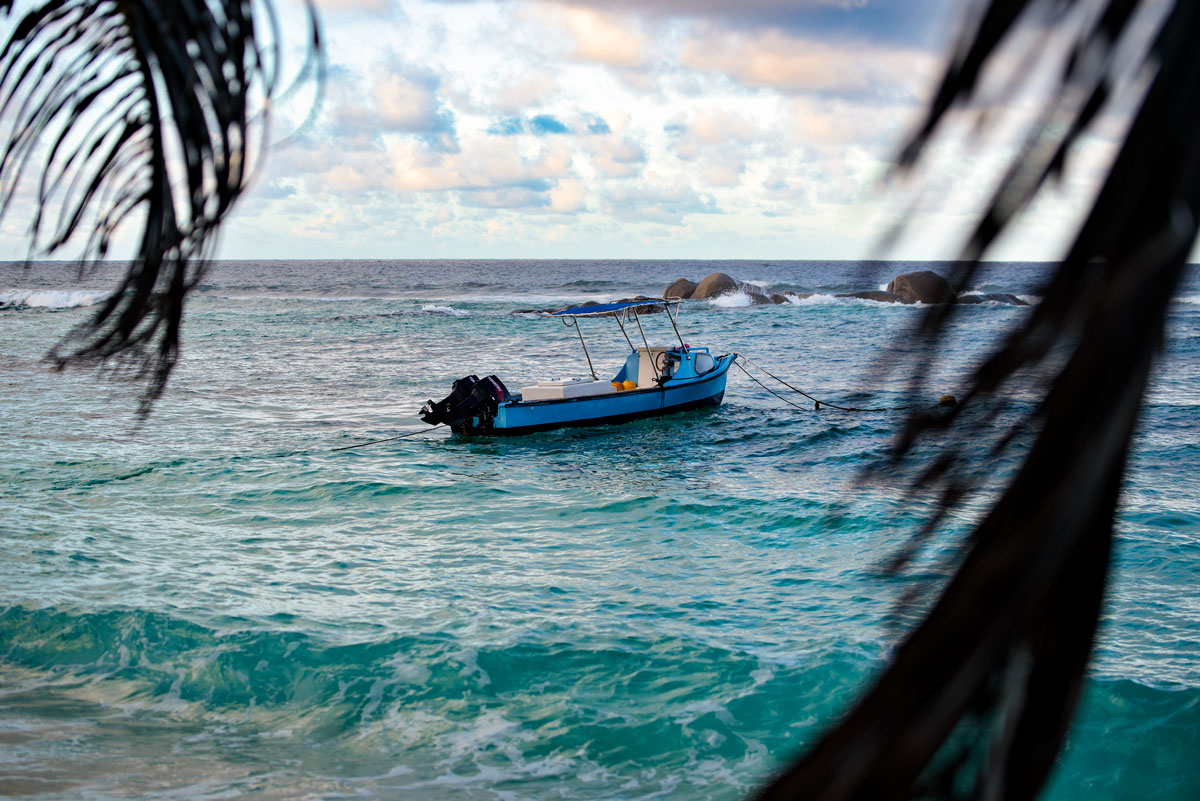
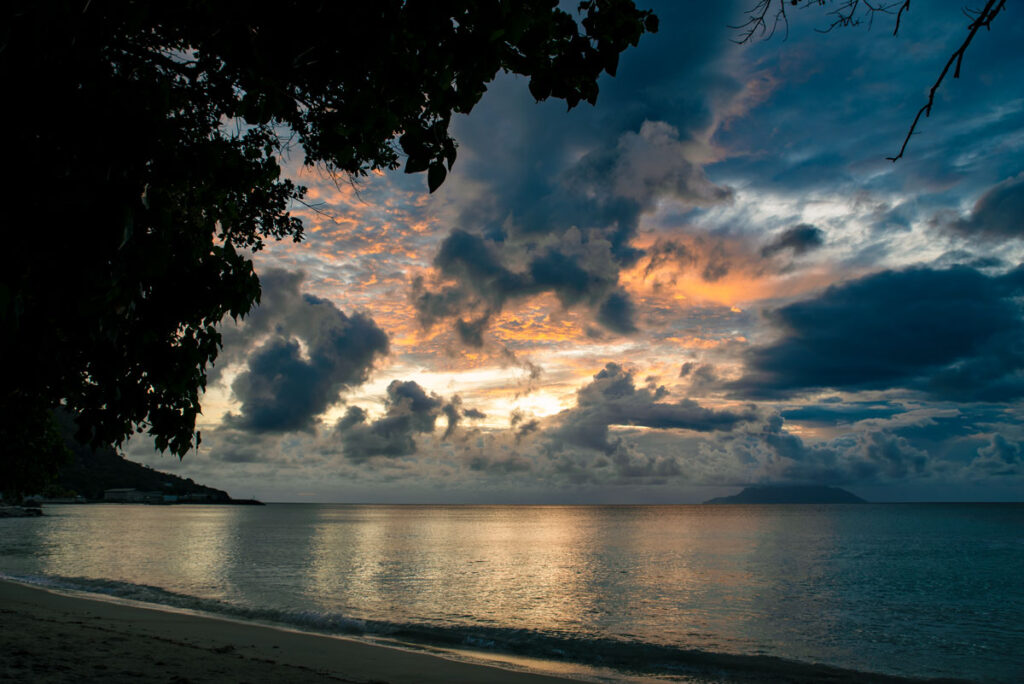
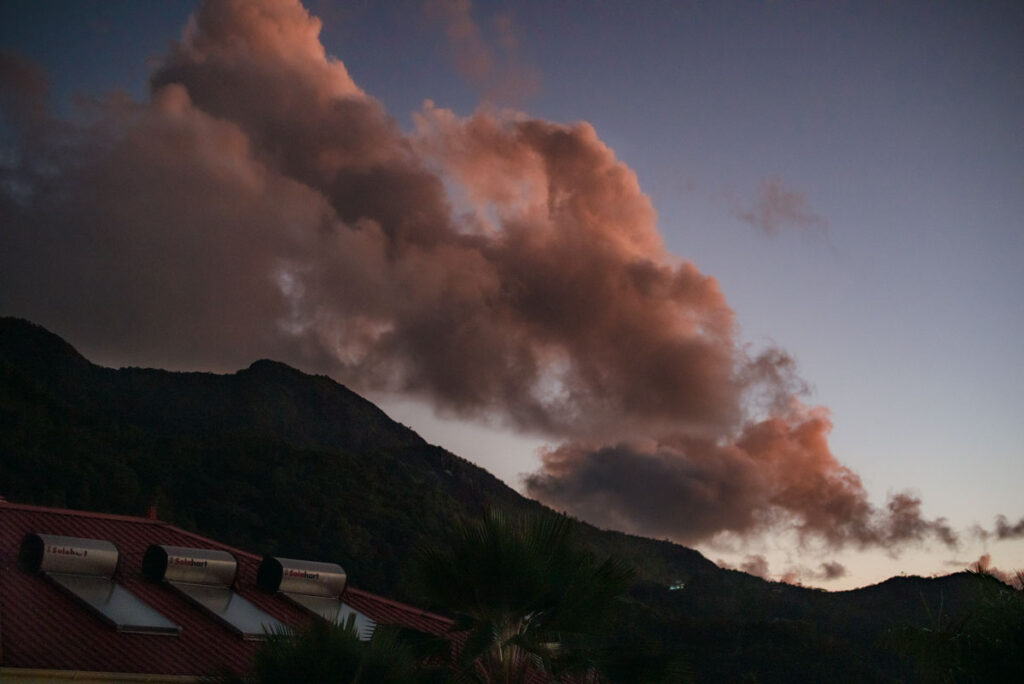
We have eaten from the breadfruit, so one day we will come back to Seychelles – so they say here. That’s a comforting thought, because we may not find a more beautiful place like this again. Hardly any other beach will be able to compete with these.
A trip to the Seychelles, however, means destroying what you find. Climate change is destroying the unique underwater world off the islands, causing sea levels to rise and threatening fisheries – one of the most important sources of income for many Seychellois. The waste of resources – especially of luxury resorts and private flights – is enormous. For the round-trip flight to the Seychelles alone, 160 trees would have to grow to compensate for the CO2 emitted.
At the same time, tourism remains the island nation’s most important economic sector. Can this paradox be resolved?
Info about our trip
We were on the gorgeous island of Mahé for a week. Although we are not enduring beach lovers, we enjoyed our time there very much. Since Vany was pregnant, the Seychelles were the perfect destination – tropical, but mild climate, short distances, no diseases or poisonous animals.
If you want to visit more islands – for example Praslin or La Digue – then you should plan accordingly more time. You can easily get to these islands by ferry, but it is not cheap and you should take some medicine against nausea.
You should definitely visit the Takamaka Rum Distillery. There are free daily tours of the beautiful grounds followed by a rum tasting (for a charge). You will not only learn everything about the art of rum production, but also a lot about the culture and cuisine of the Seychelles.
Just let yourselves drift. Explore the heavenly beaches, hike through the jungle, enjoy the wonderful flora and fauna. You are in paradise here – enjoy every minute.
The Seychelles are expensive, no question. Especially the food and accommodation are very costly, but also offer the greatest savings potential. The classic backpacking tourism does not exist, appropriate offers are missing. The target group is well-heeled and luxury-oriented travelers. Nevertheless, you do not have to expect the Russian oligarchs – at least on Mahé – we mainly met families, pensioners and couples.
If you go to the restaurant, you pay 30-40 euros p.p. upwards. With appetizers and drinks, you’ll quickly reach a three-digit amount – and that’s in a normal restaurant. If you’re lucky, you’ll get freshly caught fish, seafood, local vegetables and fruit, and high-quality wine. But it’s often hard to tell if a restaurant is delivering this high quality, or just coming up with a nice interior.
Alternatively, go to the takeaways you’ll find in the larger villages. Okay, the food there is mostly fast food (pizza, burgers, fries, wraps), but some of the takeaways also offer rice with curry and fish or meat. On many blogs these takeaways were highly recommended. However, we did not find the quality convincing. But you pay for a meal only about 5-7 euros. On the main beach Beau Vallon, we ate a few times at K Food and Green Coconut, which was okay.
Our tip: Book an accommodation with kitchen. Then you can buy really fresh and local food on the market in Victoria or a small stand on the roadside and prepare it yourself. This saves money and tastes – depending on your cooking skills – even better in the end.
What can be said for the food, can also be said for the hotels. Prices start from about 100 euros per double room. If you book early, you can also find good deals for a little less money per night. We were very satisfied with our hotel Marie Laure Suits. It is a not too big, owner-managed hotel with a very (!) clean complex, nice rooms, different room categories (also with kitchen) and located not even five minutes away from the beach. If you are on Mahé for a longer time, we recommend you to change your accommodation in between, so that you can explore other parts of Mahé without stress. You can also make day trips to the different areas of Mahé – Mahé is not that big – but this way you save the travel time.
We felt 100% safe at all times. However, you should be careful when walking along the unlit streets at night.
At the time of the trip, Vany was pregnant, so we can’t say anything about the child-friendliness per se. However, we assume that children should have just as much fun on beach and hiking days on the Seychelles as we adults. Getting around with a stroller might be problematic – many accesses and paths are not barrier-free – beaches and jungle trails anyway. So we recommend you a stretcher / brace for babies and toddlers.
Locals as well as tourists drive micro cars – and that is reasonable. The roads and streets in the Seychelles are narrow and winding, but not too busy. Nevertheless, expect heavy rush hour traffic at peak times (in the morning towards Victoria and in the evening out of the capital). There is left-hand traffic and next to many (narrow) roads a deep ditch runs along the edge of the road. So drive slowly and not too fast.
There are also buses, with which you should reach the most important points of the island quite well. However, keep in mind that if you are going to or from the airport, the buses might not be able to take you with your suitcases and luggage.
Off-roading: Some car rental companies offer small SUVs or pickups, but you should stay away from them. First, on the narrow streets of Mahé you are better off with a small car. Second, there may be some jungle roads to drive on, but don’t forget: the Seychelles are an incredibly beautiful natural paradise with a unique flora and fauna. It goes without saying that driving on the beaches and in the jungle with an off-road vehicle is an absolute no-go.
